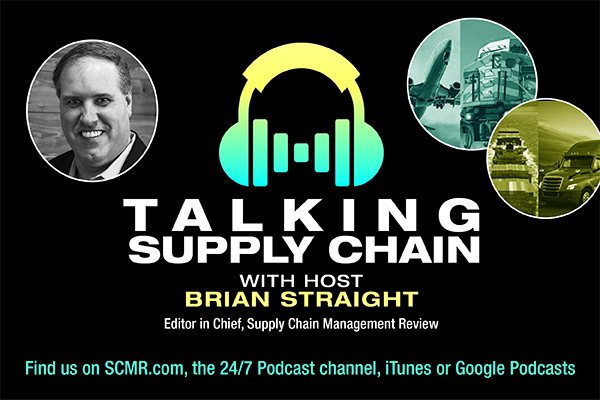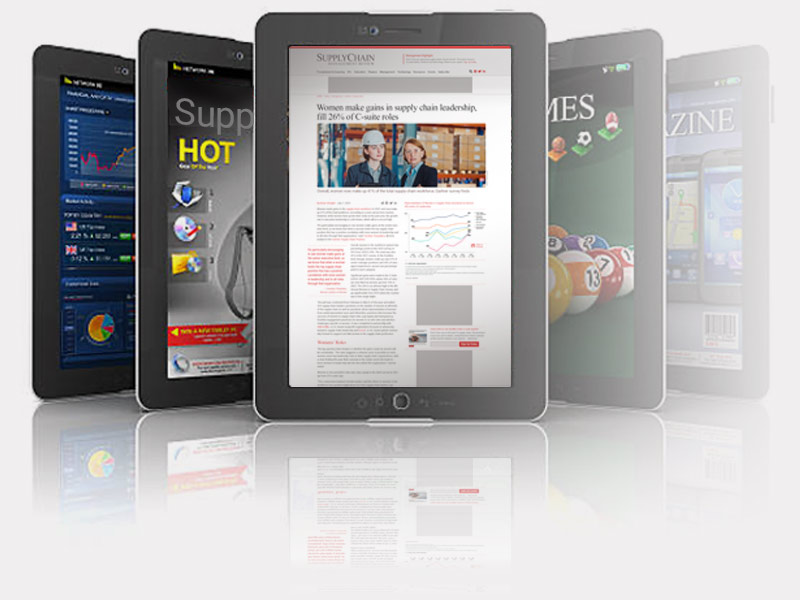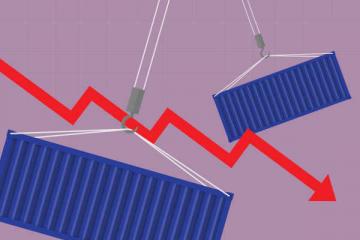Manufacturing output remained on a downswing, according to the new edition of the Manufacturing Report on Business, which was issued today by the Institute for Supply Management (ISM).
The report’s key metric, the PMI, at 46.3 (a reading of 50 or higher indicates growth), was down 1.4% compared to February, contracting, at a faster rate, for the fifth consecutive month. The last five months of contraction, through March, were preceded by a stretch of 29 consecutive months of growth. ISM also said that the overall economy contracted, at a slower rate, in March, for the fourth consecutive month, which was preceded by 30 consecutive months of growth.
The March PMI is 4.6% below the 12-month average of 50.0, with May 2022 marking the high, for that period, at 56.1, and March 2023, the most recent reading, at 46.3, marking the lowest. It also represents the lowest monthly reading since May 2020, when it came in at 43.5.
ISM reported that six manufacturing sectors— Printing & Related Support Activities; Miscellaneous Manufacturing; Fabricated Metal Products; Petroleum & Coal Products; Primary Metals; and Machinery—saw growth in March. And 12 sectors saw declines, including: Furniture & Related Products; Nonmetallic Mineral Products; Textile Mills; Plastics & Rubber Products; Paper Products; Wood Products; Food, Beverage & Tobacco Products; Apparel, Leather & Allied Products; Chemical Products; Computer & Electronic Products; Electrical Equipment, Appliances & Components; and Transportation Equipment.
The report’s key metrics were largely down in March, including:
- New Orders, which are commonly referred to as the engine that drives manufacturing, decreased 2.7%, to 44.3, contracting, at a faster rate, for the seventh consecutive month, with five sectors reporting growth;
- Production, at 47.8, rose 0.5%, contracting, at a slower rate, for the fourth consecutive month, with eight sectors reporting growth;
- Employment, at 46.9, fell 2.2%, contracting, at a faster rate, for the second straight month with six manufacturing sectors reporting employment growth;
- Supplier Deliveries, at 44.8 (a reading above 50 indicates contraction), grew at a faster rate, for the sixth consecutive month, with two sectors reporting slower deliveries in March (ISM said that this reading indicates the fastest supplier delivery performance since March 2009, when the index registered 43.2);
- Backlog of Orders, at 43.9, were down 1.2% compared to February, contracting, at a faster rate, for the sixth consecutive month, with two sectors reporting growth;
- Inventories, at 47.5, fell 2.6%, contracting after 19 consecutive months of growth, with seven sectors reporting higher inventories;
- Customer Inventories, at 48.9, were up 2.0%, remaining too low, at a slower rate, for the 78th consecutive month, with five sectors reporting higher inventories;
- Prices, at 49.2, fell 2.1%, following growth in February, which was preceded by four months of contraction, with eight sectors reporting higher prices;
- New Export Orders, at 47.6, fell 2.3% contracting, at a faster rate, for the eighth consecutive month; and
- Imports, at 47.9, fell 2.0%, contracting, at a faster rate, for the fifth consecutive month
Comments submitted by the ISM member respondents again highlighted various themes related to the economy and market conditions.
An Apparel, Leather & Allied Products respondent said that business is still slow overall, with customers having not yet picked up orders at pre-pandemic levels. And a Chemical Products respondent observed that sales are a bit down and budgets are being cut with a greater emphasis on savings.
Tim Fiore, Chair of the ISM’s Manufacturing Business Survey Committee, said in an interview that manufacturing is, and has been, in a period of weak demand patterns, with all 10 of the report’s subindex categories all showing contraction.
“The decrease in the manufacturing inventories number was very surprising,” he said. “Our panelist companies are making sure they are reducing their inventory on hand, indicating they are not confident enough in future demand, coupled with the fact that there was almost a 1:1 ratio of companies hiring versus companies managing headcount down. Those are two distinct differences in March. We felt that the first half of the year would be lumpy but now that could be the case through all of the third quarter.”
On a more positive note, though, Fiore observed that going back to October 2022, the PMI decline has been modes, falling 3.7% over that period, while noting that the March PMI tally underperformed.
And he also noted that the March Supplier Deliveries number would need to start to head back to 50 to support a growing PMI reading, but that is currently not the case.
“At a 45 reading, suppliers are continuing to be able to deliver better and faster,” he said. “That indicates their order books are weak, too. Even with New Orders at 44.3, I would have thought the input sides—supplier deliveries and inventories—would each have been closer to 50. But it was down nearly 3%. Had it not been, then the PMI would have been closer to 48. Also, exports were down 2.3%, and the sector has been working off backlog for seven months. It is not going to be replaced by New Orders, and companies are now hunkering down, making sure they are not adjusting the raw materials they cannot convert in the moderate term. More companies are now looking to bring their headcounts down. We have a slow slowdown and a soft landing. Pricing is in the same range as February. Things have leveled off, it seems.”
In the coming months, Fiore said that manufacturing output is expected to remain in its current range through the third quarter, noting that July and August typically are not strong manufacturing months, coupled with seasonal factors mixed in that have been impacted by the pandemic in recent years.
On a year-to-date basis, Fiore explained that the current PMI reading trails the ISM projected estimate of 48-to-52. And when looking at key elements that would indicate a recovery is underway, the majority of them are in negative territory, with only one, manufacturing lead times, showing growth.
“Transportation disruptions are not there; transportation is flowing well,” he said. “The hire-to-fire ratio is getting closer to fire than it was to hire, which is a negative. The proportion of manufacturing GDP with a composite PMI calculation at or below 45%, which is a good barometer of overall manufacturing sluggishness, was 25% in March, compared to 10% in February, 26% in January, and 35% in December 2022.”
SC
MR


Latest Supply Chain News
- Survey reveals strategies for addressing supply chain, logistics labor shortages
- Israel, Ukraine aid package to increase pressure on aerospace and defense supply chains
- How CPG brands can deliver on supplier diversity promises
- How S&OP provides the answer to in-demand products
- AI, virtual reality is bringing experiential learning into the modern age
- More News
Latest Podcast

 Explore
Explore
Procurement & Sourcing News
- Israel, Ukraine aid package to increase pressure on aerospace and defense supply chains
- How CPG brands can deliver on supplier diversity promises
- How S&OP provides the answer to in-demand products
- There is still work to do to achieve supply chain stability
- Blooming success: The vital role of S&OE in nurturing global supply chains
- How one small part held up shipments of thousands of autos
- More Procurement & Sourcing
Latest Procurement & Sourcing Resources

Subscribe

Supply Chain Management Review delivers the best industry content.

Editors’ Picks




